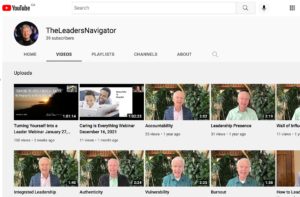“Trust is the new currency in life. It is critical to a productive workplace. Trust lies at the heart of every team, organization, and community, because without trust, you have no relationship.”
From the book Bridges of Trust: Making Accountability Authentic, by David Irvine and Jim Reger.
What is the most important thing on any team? Think of all the various teams you have been on in your life – sports teams, school teams, family teams, or teams in your workplace. Our experience is that teams that have high levels of trust are better in every way – they are more productive; they are more creative; the energy is high; people are motivated to be on them; and they are more fun! Contrast this to the experience of being on a low or no trust team and we’re sure you will agree with us that the difference is not incremental – it’s huge.
Trust enrolls people in a worthwhile vision. It then enables full passion, commitment, freedom, energy, health, effectiveness, and engagement. Trust makes everything happen in organizations. If you can earn and build trust, you can lead. If you can’t, you won’t be a leader. It’s that simple, and it’s that complex.
Questions that assess trust
- Can they deliver results?
- Do they stand by me under pressure?
- Do they tell me the truth?
- Do they fulfill their promises?
Seven Things We Know About Trust
- Trust cannot be commanded, coerced or controlled. It can be only invited and earned.
- Trust is a function of three primary qualities:
- Character (your trustworthiness);
- Competence (your skill level); and
- Connectability (your ability to connect with people).
- Trust is a rather delicate flower. What can take years to build can be destroyed in one action.
- Trust is not a prerequisite; it’s an outcome. It takes courage to trust. While trusting people can be risky, not trusting people is a greater risk. Blind trust is naïve. Mature trust, on the other hand, has lived through betrayal and responded with courage.
- Trust in others begins with self-trust. You won’t trust others beyond your capacity to trust yourself.
- Trust must be constantly earned. It’s like a chequing account; you have to keep making deposits if you want to have something to withdraw.
- You don’t have to be perfect to be trustworthy. You simply have to be honest, sincere, and willing. Most broken trust can be repaired.
Seven Ways To Build Trust
- Be accountable. Accountability – the ability to be counted on – is, in many ways, the foundation of trust. Think carefully before you make a promise. Don’t make promises you can’t keep. Then honor your agreements.
- Be Competent. This is a given. If you are leading a team of engineers, you aren’t going to be trusted if you claim to be a competent engineer unless you can demonstrate this. When I consult with a team of engineers, my competence comes from my reason for being there. I better be a great presenter or workshop facilitator. I had better have done my homework to research their culture, their industry, their organization.
- Be Honest. Tell people what you know, and tell them what you don’t know. People will see through dishonesty and inauthenticity. When I work with an organization such as the RCMP, I obviously can’t build trust on my ability as a police officer. What I can do is tell them that, and let them see that I’m an expert in leadership development, the people side of their work when they aren’t policing.
- Extend trust. Trust presents a paradox in that it needs to be earned, but to be earned, it has to first be given. Yet trust, without the facts to base it on, is naiveté. That is why trust is often given in small amounts over time. As we experience success trusting an individual, we are more and more willing to trust further. Behaviour begets behaviour. Trusting others invites trust. Make trust a conscious objective.
- Deliver results. If I want to establish trust with a new client, what is the one thing I can do to make that happen quickly? Deliver results.
- Learn to connect. Your capacity to build trust ultimately depends on your capacity to connect. Listen at least twice as much as you talk. Take time to understand before being understood. Let people see who you are, which allows them to like you, not just respect you. The key in relationships is to be personal. Acknowledge feelings. The key is not just walking around; it is opening up, paying attention, and being in touch. People really don’t care how much you know until they know how much you care.
- Be in touch with reality. Know about what goes on in the “meetings after the meeting.” Get down to the cafeteria. Know what people are talking about in the hallways. Do your homework to know what is really going on inside people – when they don’t have to be polite.
What’s your experience of fostering trust in your workplace or home?
“Trust is the new currency in life. It is critical to a productive workplace. Trust lies at the heart of every team, organization, and community, because without trust, you have no relationship.”
From the book Bridges of Trust: Making Accountability Authentic, by David Irvine and Jim Reger
What is the most important thing on any team? Think of all the various teams you have been on in your life – sports teams, school teams, family teams, or teams in your workplace. Our experience is that teams that have high levels of trust are better in every way – they are more productive; they are more creative; the energy is high; people are motivated to be on them; and they are more fun! Contrast this to the experience of being on a low or no trust team and we’re sure you will agree with us that the difference is not incremental – it’s huge.
Trust enrols people in a worthwhile vision. It then enables full passion, commitment, freedom, energy, health, effectiveness, and engagement. Trust makes everything happen in organizations. If you can earn and build trust, you can lead. If you can’t, you won’t be a leader. It’s that simple, and it’s that complex.
Questions that assess trust:
- Can they deliver results?
- Do they stand by me under pressure?
- Do they tell me the truth?
- Do they fulfill their promises?
Seven Things We Know About Trust
- Trust cannot be commanded, coerced or controlled. It can be only invited and earned.
- Trust is a function of three primary qualities: 1) Character (your trustworthiness); 2) Competence (your skill level); and 3) Connectability (your ability to connect with people).
- Trust is a rather delicate flower. What can take years to build can be destroyed in one action.
- Trust is not a prerequisite; it’s an outcome. It takes courage to trust. While trusting people can be risky, not trusting people is a greater risk. Blind trust is naïve. Mature trust, on the other hand, has lived through betrayal and responded with courage.
- Trust in others begins with self-trust. You won’t trust others beyond your capacity to trust yourself.
- Trust must be constantly earned. It’s like a chequing account; you have to keep making deposits if you want to have something to withdraw.
- You don’t have to be perfect to be trustworthy. You simply have to be honest, sincere, and willing. Most broken trust can be repaired.
Seven Ways To Build Trust
- Be accountable. Accountability – the ability to be counted on – is, in many ways, the foundation of trust. Think carefully before you make a promise. Don’t make promises you can’t keep. Then honor your agreements.
- Be Competent. This is a given. If you are leading a team of engineers, you aren’t going to be trusted if you claim to be a competent engineer unless you can demonstrate this. When I consult with a team of engineers, my competence comes from my reason for being there. I better be a great presenter or workshop facilitator. I had better have done my homework to research their culture, their industry, their organization.
- Be Honest. Tell people what you know, and tell them what you don’t know. People will see through dishonesty and inauthenticity. When I work with an organization such as the RCMP, I obviously can’t build trust on my ability as a police officer. What I can do is tell them that, and let them see that I’m an expert in leadership development, the people side of their work when they aren’t policing.
- Extend trust. Trust presents a paradox in that it needs to be earned, but to be earned, it has to first be given. Yet trust, without the facts to base it on, is naiveté. That is why trust is often given in small amounts over time. As we experience success trusting an individual, we are more and more willing to trust further. Behaviour begets behaviour. Trusting others invites trust. Make trust a conscious objective.
- Deliver results. If I want to establish trust with a new client, what is the one thing I can do to make that happen quickly? Deliver results.
- Learn to connect. Your capacity to build trust ultimately depends on your capacity to connect. Listen at least twice as much as you talk. Take time to understand before being understood. Let people see who you are, which allows them to like you, not just respect you. The key in relationships is to be personal. Acknowledge feelings. The key is not just walking around; it is opening up, paying attention, and being in touch. People really don’t care how much you know until they know how much you care.
- Be in touch with reality. Know about what goes on in the “meetings after the meeting.” Get down to the cafeteria. Know what people are talking about in the hallways. Do your homework to know what is really going on inside people – when they don’t have to be polite.
What’s your experience of fostering trust in your workplace or home? What is your leadership priority?


